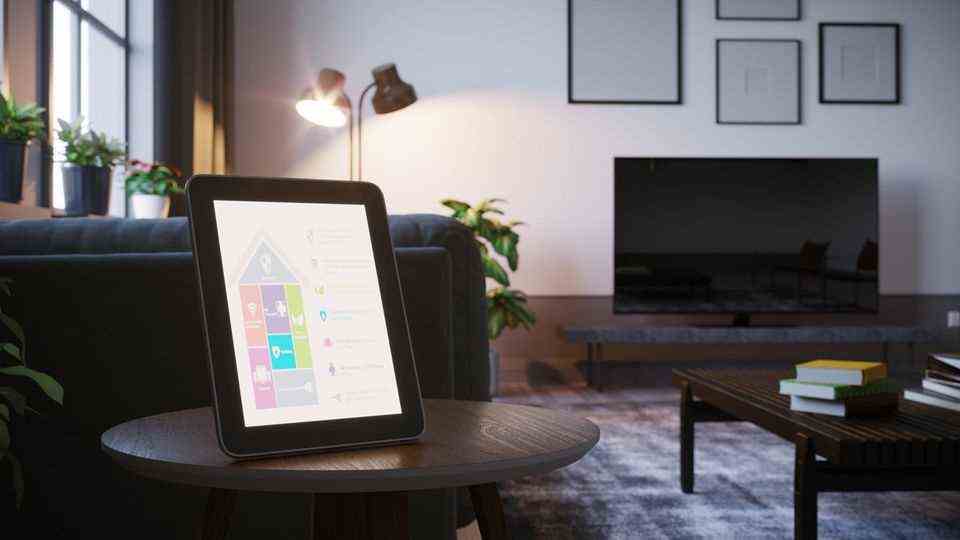lighting
Smart light: Which Philips Hue alternatives take on the top dog?
There are several Philips Hue alternatives. Read here what Innr, Osram and Tradfri can do
© Getty Images
A connected home is more convenient and can even save energy. The smart lighting system from Philips Hue is known and popular – but it is not cheap. Here you will get to know possible alternatives.
Smart light is the ideal introduction to the world of a smart home. The wireless LEDs are quick and easy to install and have a great effect. Whether by smartphone or voice command, smart lighting systems offer the great advantage that they can be flexibly adapted to your home and your needs. You can set practical timers to save electricity and money, or you can create personalized lighting and color concepts. No question about it, smart light has charm and enhances your own four walls. Philips Hue is one of the best-known systems, but also one of the most expensive. Not everyone wants to dig deep into their pockets for smart light. Here we present possible alternatives to Philips Hue.
Inexpensive alternative to Philips Hue
The price of Philips Hue LEDs is often the reason not to buy the smart lights. The alternative from a Dutch company is called Innr. There are many different illuminants in the range. There are of course classic LEDs in different sockets and shapes, but also light strips and light spots. Thanks to the ZigBee wireless standard, you can even add Innr LEDs to existing Hue products by using the bridge as a control unit.
You have to do without Bluetooth, Innr currently does not offer any suitable products for this. Like Hue, the Innr alternative has white and colored light sources. The price is higher if you opt for a colored version. Voice assistants such as Alexa and Co. also work with Innr on request.
Bluetooth Philips Hue alternative
Osram Smart + LEDs are very similar to Philips Hue. Here, too, you need a base station that controls all lamps. Osram currently no longer offers its own gateway, but users can use products from other smart systems such as Magenta Smart Home or Philips Hue. This is possible thanks to the ZigBee wireless standard, so you can also couple and control LEDs from different manufacturers.
Osram has both Bluetooth LEDs and ZigBee-based lights. These cannot be combined because they are based on different radio standards. You can connect the Bluetooth version to the Apple Home Kit, which should be particularly exciting for fans of the Apple ecosystem. Like Hue and Innr, Osram has different lights in its range. This applies to shapes, colors and frames. There are also light strips and various other lights such as light spots. This Philips Hue alternative can also be controlled via voice command.
Smart solution from Sweden
The well-known Swedish furniture store Ikea offers its own smart home lighting with Tradfri. Practical for everyone who likes to shop at Ikea and has a furniture store nearby. The advantage of Ikea Tradfri is obvious, the products are coordinated with each other and so you can shop for cupboards and the right smart lighting directly during a visit. The assortment ranges from candles or ball LEDs and different sockets to practical LED light panels. You can currently not find any light streaks. However, it is to be expected that Ikea will continue to expand the smart home system in the next few years and that products will follow suit.
It is controlled using a suitable app or remote control. Similar to Philips Hue, there is also a gateway at Tradfri. The radio standard is based on ZigBee and is therefore compatible with the Hue system. The Ikea system is also suitable for voice assistants such as Alexa and Google Assistant.

Smart lighting systems are flexible and multifaceted
© Getty Images
What should you look out for before buying a Philips Hue alternative?
With wireless LEDs it is easy to save electricity, but the smart lightbulbs are always on standby and therefore consume some electricity even in standby mode, which you should plan for before purchasing. The following five criteria may also be relevant.
1st color
There are colored and white LEDs. With white lamps you can cover different lighting moods in the spectrum of cool white and warm white. As a rule, the white versions are cheaper than the colored ones. Colored lightbulbs have a wide range of colors and can create a wide variety of lighting moods. Brightly colored light strips are particularly flexible and are often used as an Ambilight replacement for televisions.
2. Control
A home becomes really smart when your lamps work on demand. Control via voice commands is therefore a popular option. The handle for Tablet or smartphone is no longer necessary and you can operate the LEDs flexibly in every room. Due to their great popularity, most Philips Hue alternatives can be controlled with voice commands. This is especially true for the well-known competition, with cheaper products from the Far East, you should take a closer look if this feature is important to you. Otherwise, control via smartphone or tablet app is common.
3. Radio standard
The optimal networking of the different light sources is crucial, because the better the LEDs can communicate with each other, the easier it is to operate.
- As a smart home wireless standard, ZigBee established. It was developed for the transmission of small amounts of data with a focus on minimal energy consumption. The advantage is that, thanks to ZigBee, you can combine different products, as they all speak the same language and can therefore network. The disadvantage is that you always need a control center and this has to be purchased.
- WIRELESS INTERNET ACCESS is another option, but you are then bound to one system because all devices are linked to an app. In practice this would mean as soon as you buy additional products from other manufacturers, you would have to use different apps for control.
- Bluetooth is also an option, but there is less choice in this area. There is no control unit, you can simply connect to the tablet or smartphone via the app. This saves costs in the short term, but presents you with the same challenge as with WLAN, because as soon as you use products from different manufacturers, you need different apps.
4. Central control unit
Anyone who knows Philips Hue knows that a control unit is necessary, the Hue Bridge. Because without them, the smart LEDs cannot be connected, especially for LEDs from other manufacturers. With many providers you need a control unit (gateway, hub, bridge) and ZigBee compatible lights to connect. Plan for these additional costs and don’t forget to buy the necessary accessories. If you prefer Bluetooth, the control element is omitted. You will find some LEDs at Hue and some competitors that you can conveniently control via Bluetooth with an app, without a control unit.
5. Form and version
Smart LEDs are available in different shapes and sockets. The wide E27 socket is common, but many manufacturers also offer variations such as E14 sockets. Depending on the type of lamp, round or candle-shaped LEDs are possible. The round models are more common, but some suppliers sell candle-shaped light bulbs. Light spots, cabinet lighting and flexible LED strips are further variations of smart light. Get an overview of the range of different manufacturers and then select the light sources that suit your home.
Tip: You can easily save with a voucher from Ikea.
You might also be interested in:
This article contains so-called affiliate links. Further information are available here.

